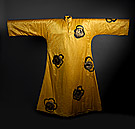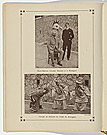Henri MATISSE

Henri-Emile-Benoît Matisse (b La Cateau-Cambrésis, France 31 December 1869 – d Cimiez, France, 3 November 1954) attended morning drawing classes at the Ecole Quentin Latour in 1889. He started at the Académie Julian in Paris a year later and in 1892 began drawing classes with Gustave Moreau at the Ecole des Beaux-Arts.
After previously exhibiting at the inaugural Salon d’Automne (1903) with friends such as André Derain, Matisse was part of in the famous Fauve exhibition in 1905. Gertrude Stein introduced Matisse to Pablo Picasso with whom he exchanged paintings. Matisse also began to be collected by the Russian art patron SI Shchukin, who commissioned his works Dance and Music in 1909, installing them in his Moscow home in 1910.
In 1920 he was invited by Diaghilev to design the Ballets Russes’ 1920 production of Le Chant du rossignol and travelled frequently between Nice and Monte Carlo to consult the impresario about the project. In 1937 Matisse was again invited, this time by the Ballets Russes de Monte Carlo, to design scenery and costumes for its ballet Rouge et noir (Red and black).
In 1931 Matisse accepted an important commission from Albert C Barnes to paint a mural, The dance II, for the walls of the Barnes Foundation in Merion, Pennsylvania. Matisse was diagnosed with cancer in 1941 and was forced to use a wheelchair after an operation to remove a tumour. From this time onward Matisse worked extensively with cut-out coloured paper, a design technique that he had first used when developing his costume and scenery designs for Le Chant du rossignol.
Enriett
Henri Matisse and the Nightingale c1920 (detail) page 15 in Souvenir programme for the Ballets Russes at l’Opéra, May–June 1920 National Gallery of Australia, Canberra









